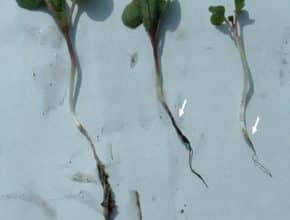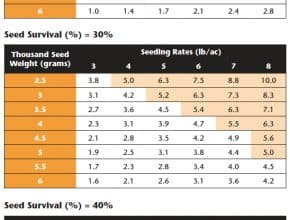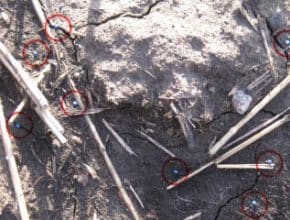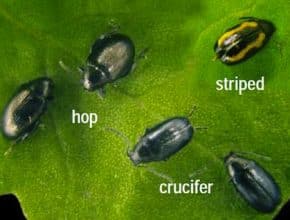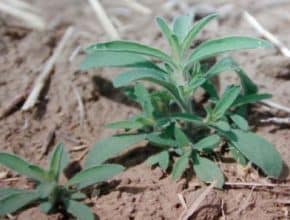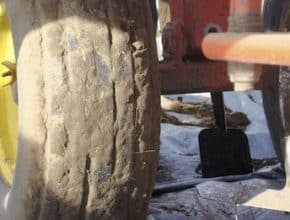The seedling diseases risk increases with moist soil conditions and with tight canola rotations. The three best management steps for canola in this situation are: 1. Use treated seed. 2. Seed shallow. 3. Don’t cheat on the seeding rate, especially if seedling diseases have been a problem in past years…
Canola Watch Posts
-
-
When the warmer weather returns, as is forecast later this week, canola still in the seedling stage that was seeded over 3 weeks ago may be at high risk of flea beetle damage. Also, dig down to look at the seed. A soft mushy seed is dead — likely from disease — and will not emerge…
-
-
Best results from broadcast seeding came from fields that were fertilized early and harrowed to improve seed to soil contact. If field moisture conditions will allow growers to incorporate broadcast seed and apply fertilizer, then they’re not too far from being able to seed with the drill. May 9 is too early to park the drill and look at alternative…
-
Precipitation in many regions stopped seeding progress. While growers wait to get seeding again, check fields for emerging weeds and apply a pre-seed burnoff where necessary and when possible. By……
-
-
Foxtail barley has proliferated in some fields that were unseeded last year due to excess moisture. If it’s in patches, tillage may be the best way to control it. Pre-seed applications when shoots are small and all energy is moving upward through the weed are not always that effective. Waiting until the foxtail barley is bolting may provide a better…
-
Soil on seeding equipment is a key vector for the movement of clubroot spores from field to field. Cleaning dirt from equipment before leaving a clubroot-infested field is a good disease management practice. Avoid working in known clubroot-infested fields when soil is wet and more likely to stick to equipment…
-
Think critically when it comes to input investments. Canola plants, like any other plant, need many different nutrients and rely on naturally-occurring hormones to grow and produce a good yield. Limitation on any of these may reduce yield potential. But, in most cases when it comes to crop nutrition, the biggest return on investment comes from nitrogen, followed by sulphur…

